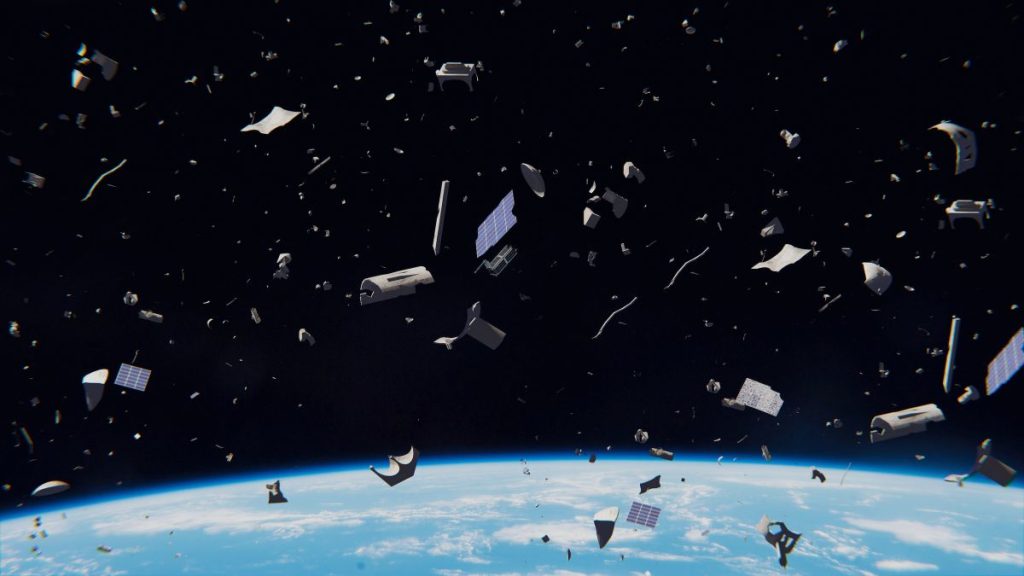There’s a floating garbage dump orbiting Earth, and it’s getting fuller every year.
Space debris — known colloquially as space junk — is the name that scientists give to the thousands of pieces of broken satellites and spacecraft that clog Earth’s orbit. Space junk can be as small as a paint fleck or as large as an abandoned rocket launch vehicle; no matter the size, orbital debris pose a significant threat to the astronauts and spacecraft that work in Earth’s orbit, according to NASA (opens in new tab).
The amount of space junk in orbit increases hand-in-hand with the growth of the space industry on Earth. On March 10, a group of international researchers writing in the journal Science (opens in new tab) raised the alarm on the growing problem of space junk, calling for a legally-binding treaty to “help protect Earth’s orbit” before it becomes irreparably polluted with debris.
Here’s everything you need to know about space junk, and why scientists are concerned.
What is space junk?
Space junk refers to any human-made debris left in orbit around Earth.
This includes fully intact satellites that have run out of power and been left in orbit after the end of their missions, as well as broken chunks of machinery created when larger objects collide. Even tiny chips of paint that have been ripped off of rockets count as space junk.
An illustration of space junk, or space debris, around Earth. (Image credit: NASA)
How much space junk is there right now?
The United States Space Surveillance Network currently tracks more than 23,000 pieces of space junk that are larger than a softball. This includes about 3,000 defunct satellites that have been left to decay in orbit, according to the Natural History Museum (opens in new tab) of London.
However, most pieces of orbital debris are far too small to be tracked. Researchers estimate that there are more than 100 trillion untracked pieces of space junk in Earth orbit, according to the Science study. The vast majority of this untracked debris is likely less than 0.4 inches (1 centimeter) wide, according to the European Space Agency (opens in new tab) (ESA).
Why is space junk a problem?
Even tiny pieces of space junk can cause incredible damage. That’s because objects in orbit move incredibly quickly, typically reaching speeds of greater than 15,600 mph (25,200 km/h), or 10 times the speed of an average bullet shot on Earth. If two objects moving in opposite directions collide with one another in space, then the impact becomes even greater.
This means that even pea-size objects can become dangerous missiles in orbit. This was illustrated in 2016, when a small paint fleck collided with a window on the International Space Station, gouging a quarter-inch dent into the glass. (Fortunately, the window held).
Can space junk fall to Earth?
Yes, space junk frequently falls to Earth. On average, anywhere from 200 to 400 pieces of tracked space debris plummet through Earth’s atmosphere every year, according to the National Oceanic and Atmospheric Administration (opens in new tab).
Most of this free-falling junk is small enough that it burns up entirely in the atmosphere, never reaching the ground. Larger objects that can survive the fall (like satellites) typically splash down into the ocean, but not always. In August 2022, a charred, spike-like chunk of a SpaceX Crew Dragon spacecraft fell through the atmosphere and landed on a sheep farm in Australia.
The 10 foot seared spike from a SpaceX vehicle was found standing upright in a sheep farm in Australia. (Image credit: Brad Tucker)
Space junk incidents
On Feb. 10, 2009, a defunct Russian spacecraft crashed into a functioning U.S. Iridium commercial spacecraft, destroying both and adding more than 2,300 pieces of trackable space junk to orbit, according to NASA.
In March 2021, a piece of a Russian rocket collided with and destroyed a functioning Chinese military satellite.
In June 2021, a small piece of unidentified space junk slammed into the International Space Station’s robotic arm, damaging but not destroying it.
Incidents are occuring more frequently as more space junk is added to orbit each year.

